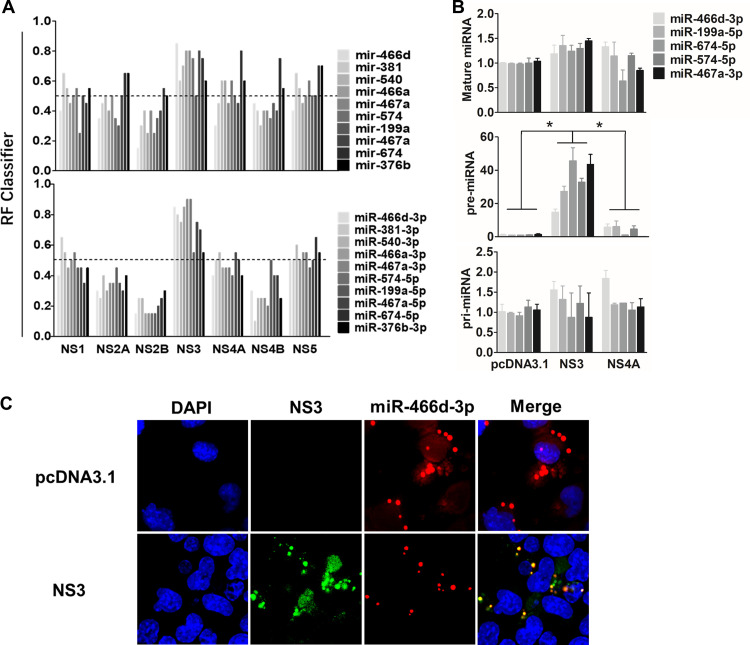FIG 6.
NS3 binds specifically with pre-miRNA. (A) The binding affinities of pre-miRNA and mature miRNA of the indicated NS proteins of JEV were predicated with a Web server named RPISeq (http://pridb.gdcb.iastate.edu/RPISeq/), and the RF calculated by RPISeq was used to evaluate the RPI. The probability threshold of RF used for positive RPIs was >0.5. (B) Expression of pri-, pre-, and mature miRNAs of miR-466d-3p, miR-199a-5p, miR-674-5p, miR-574-5p, and miR-467a-3p was selected to determine the binding affinity between NS3 and miRNA by RIP. NA cells were transfected with the plasmid encoding FLAG-tagged NS3, NS4A, or pcDNA 3.1, and the FLAG-tagged proteins were purified on an affinity gel after 48 h of transfection. After purification, total RNA on the FLAG-tagged protein was used to quantify the relative binding affinity of the indicated pri-, pre-, and mature miRNAs (versus the pcDNA 3.1 control) by qRT-PCR. The fold change of each RIP reaction from qRT-PCR data was calculated as follows: fold enrichment = 2(−ΔΔCT [experimental/pcDNA 3.1]), where ΔΔCT [experimental/pcDNA 3.1] = ΔCT [experimental] − ΔCT [pcDNA 3.1] and ΔCT = CT [RIP] − [CT [input] − log2(input/RIP dilution factor)]. (C) The pre-miR-466d-3p mimic and NS3 were colocalized in NA cells. After 48 h of transfection, the CY3-labeled miR-466d-3p mimic and NS3 stained with fluorescein isothiocyanate (FITC) in NA cells were detected by fluorescence microscopy. The images are representative of the results of three independent experiments. For all graphs, results are shown as means and SD. Significance was assessed using Student's t test. *, P ≤ 0.05.

